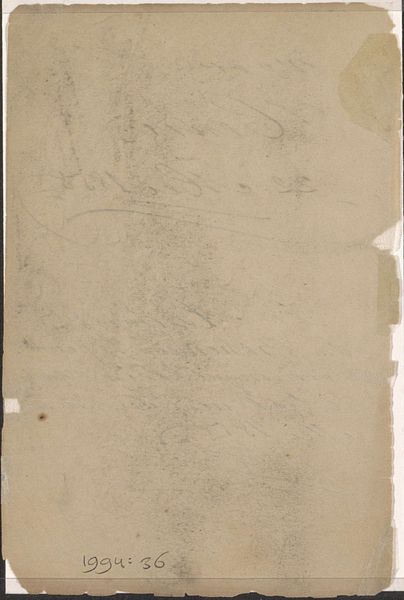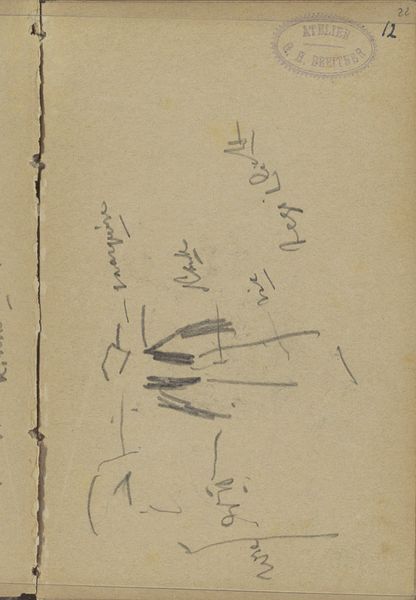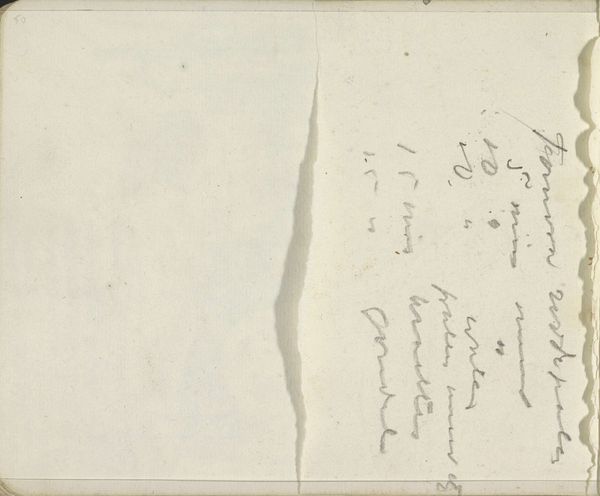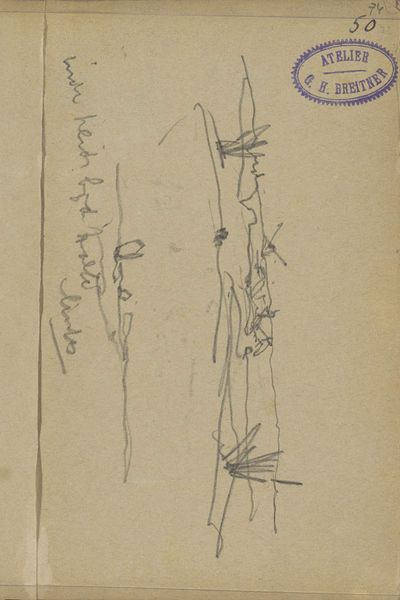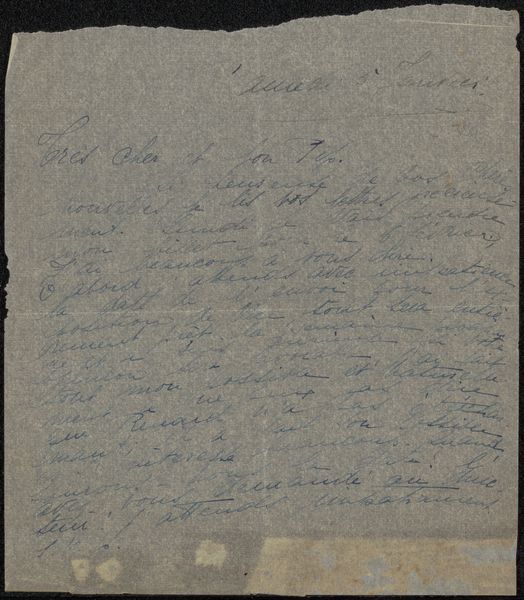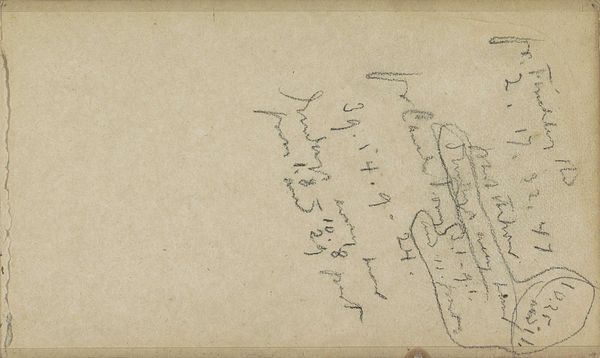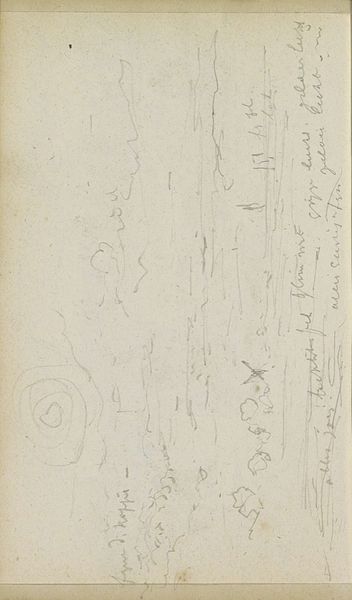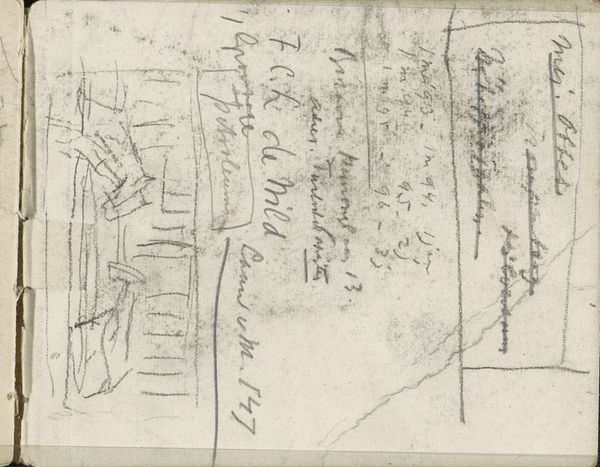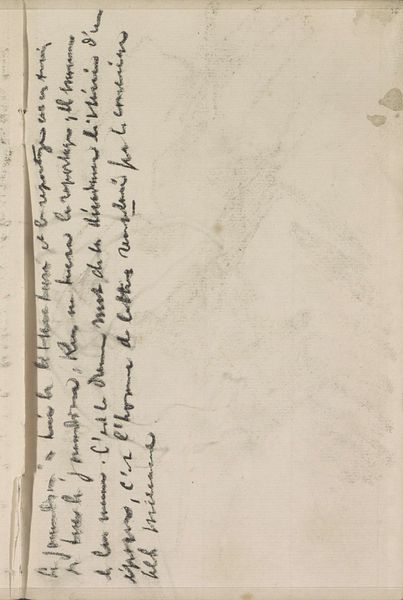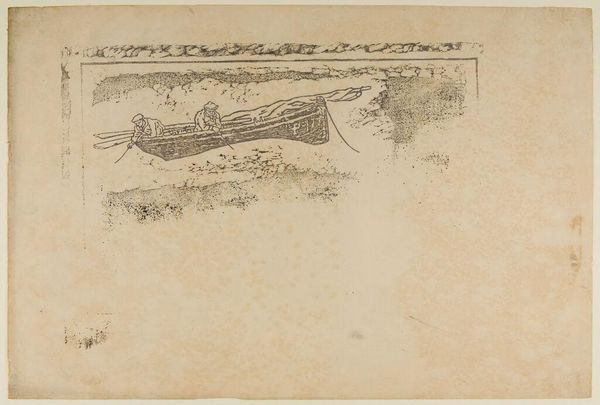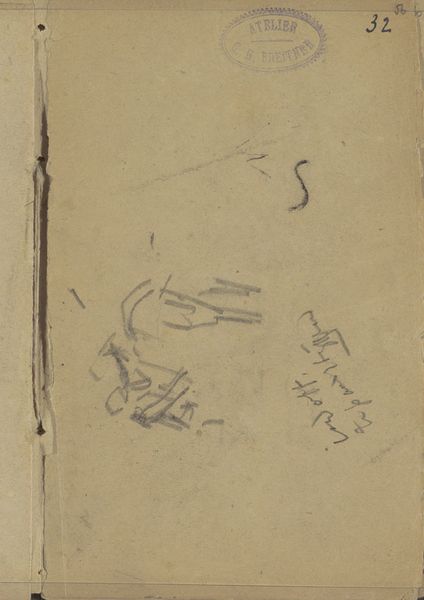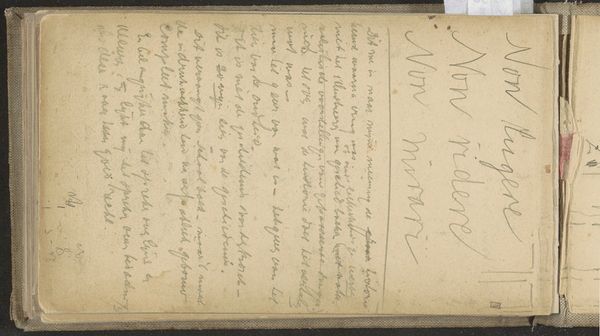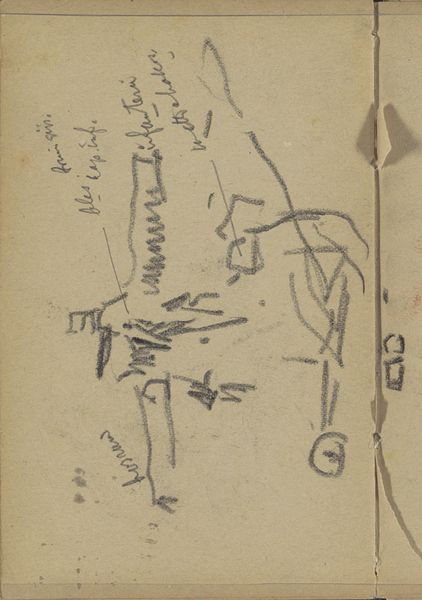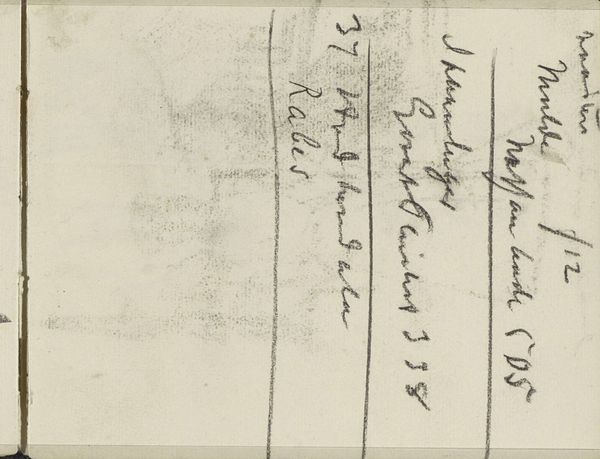
Landschap met paarden en figuren, mogelijk soldaten 1887 - 1891
0:00
0:00
#
aged paper
#
sketch book
#
hand drawn type
#
personal sketchbook
#
idea generation sketch
#
sketchwork
#
hand-drawn typeface
#
fading type
#
horse
#
sketchbook drawing
#
sketchbook art
Copyright: Rijks Museum: Open Domain
Curator: What stands out to you about this sketch by George Hendrik Breitner, titled "Landscape with horses and figures, possibly soldiers," created sometime between 1887 and 1891? I am fascinated by the raw quality and how it speaks to the social realities of its time. Editor: It's intriguing. It's just a quick sketch, really, pencil on paper, found in the Rijksmuseum collection. My initial impression is it feels fleeting, like a momentary glimpse into another time. It feels immediate in a way a finished painting wouldn't. What do you see in it? Curator: I see Breitner wrestling with the realities of labor, both human and animal. The sketchy quality draws attention to the act of creation itself, the physical labor of putting pencil to paper. Consider the context: the late 19th century was a time of rapid industrialization. Are these 'figures' really soldiers? Or workers depicted with the same kind of urgency? And how does Breitner's choice of a humble sketchbook, rather than a grand canvas, challenge traditional notions of "high art?" What do you think the choice of materials conveys? Editor: I hadn’t thought of it that way. The disposable nature of the sketchbook paper perhaps suggests a certain urgency or a casual observation - not something deemed precious at the time. The unfinished feel of the sketch maybe connects it more directly to the everyday labor he's depicting. Curator: Precisely! Breitner’s work, in its very materiality, forces us to consider art not just as a representation of reality but as a product of labor embedded within specific social conditions. Even the stamp mark hints at Breitner’s workshop as its own place of production. It prompts us to consider the making as much as the made. Editor: That really shifts how I see the piece. It’s not just a sketch, but a record of a specific interaction, almost a transaction between the artist and his world. I understand that a little more now. Thanks! Curator: And thank you. It is these questions about art's origins that continue to fuel my fascination.
Comments
No comments
Be the first to comment and join the conversation on the ultimate creative platform.
